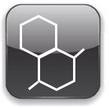Polyphthalamide
Thermoplastics > Superpolymers
PPA Polyphthalamides | ||
ASTM D5336 defines a polyphthalamide (PPA) as a polyamide in which the residues of terephthalic acid or isophthalic acid or the combination of the two products is at least 55 mol% of the dicarboxylic acid portion of the structural units that are repeat in the polymer chain. that a portion of the acid segment is replaced with an aromatic component, terephthalic acid (TPA) and / or isophthalic acid. Examples of semiaromatic PPA are:
Polyphthalamides are partially aromatic polyamides, have benzene rings in their polymer chain, unlike polyamide 6 or polyamide 66 that have a completely aliphatic chemical structure. | | |
| Properties | ||
PPAs have a high melting point, low moisture absorption, therefore, improved dimensional stability, short cycle times, good chemical resistance, excellent surface appearance, excellent mechanical properties. Still the polyphthalamide is less ductile than the polyimide 66 despite being available grades of high impact resistance. Polyphtalamides are hygroscopic they absorb moisture, decreasing the glass transition temperature and causing dimensional changes. Its high creep resistance and minimal deformation PPP make a precious material demanding industrial sectors.Components made polyphthalamides reinforced with fiberglass are resistant to temperatures up to 280 ° C with a low coefficient of friction and abrasion. PPA properties as stiffness and toughness in temperatures to 120 ° C exceed the material as PPS or PEEK . The PPA is suitable for long term use outdoors without causing a decrease in physical properties, even in extreme weather conditions such as high ultraviolet radiation, high humidity and high temperatures. Typical features of PPP
|  | |
| Synthesis and chemical resistance | ||
Like all polyamides, the PPA is a semicrystalline material composed of the reaction of a diacid and a diamine. Polyphtalamides can be obtained by polycondensation between hexamethylenediamine and terephthalic acid, or can be synthesized using terephthaloyl chloride instead of the diacid, but this is more costly than the terephthalic acid. Polyphtalamides can be attacked by strong acids or oxidizing agents and are soluble in cresol and phenol. Regarding polyamide 6 (PA66) polyphtalamides are stronger, less sensitive to moisture and have better thermal properties. |  | |
| Processability | ||
Due to the mold temperature is important for the surface finish, the mold temperatures are recommended of 135 to 165 ° C. Crystalline degrees can generally processed by injection, while the amorphous degrees often used as barrier materials. The material should have a moisture content of 0.1% or less for processing. | ||
Applications | ||
It is used to replace metals in automotive high temperature applications, such as box electrical connectors exposed to high temperatures and other multiple uses, p arts coil automotive engine wear rings pumps, c onectores fuel line, p arts mechanical equipment aviation, b omba coolants. |  | |
